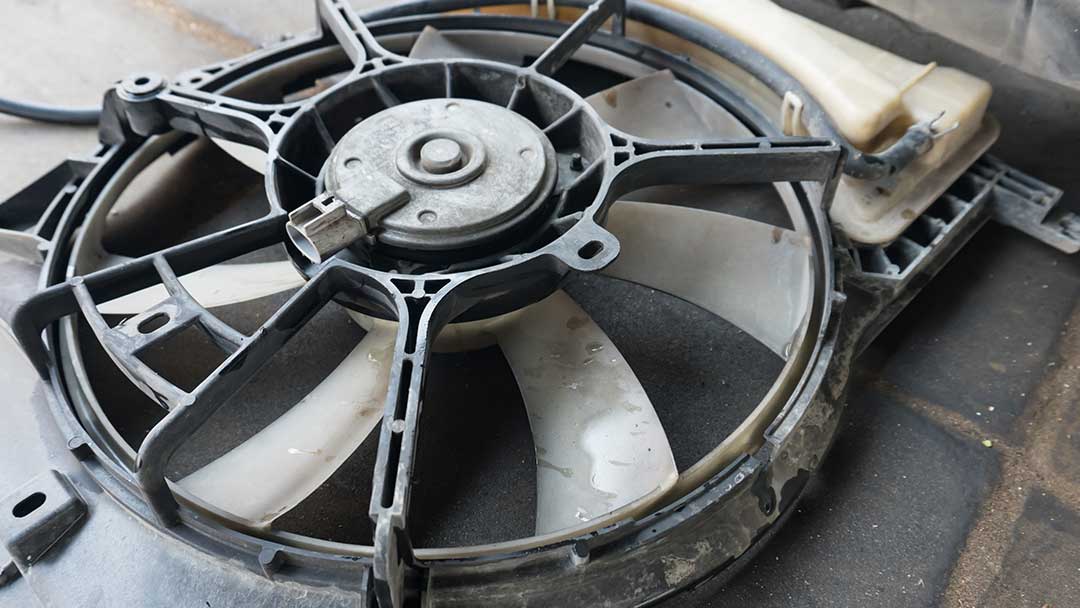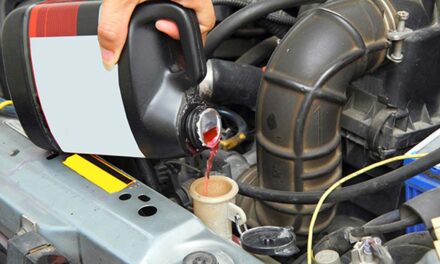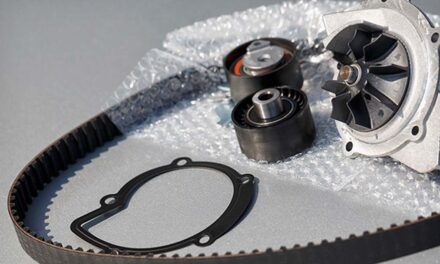Most late-model vehicles are front-wheel drive, which places the engine transversely in the frame. In this configuration, it is impractical to use an engine-driven cooling fan. Instead, the radiator remains in the front in the conventional position, and a series of electric fans provide cooling both for the engine and for cooling the air conditioning condenser.
When the vehicle is in motion, sufficient air is forced through the radiator to effect proper cooling. When the vehicle slows or comes to a stop, the airflow stops as well.
At this point, the engine temperature begins to rise as less heat is transferred to the atmosphere. A coolant temperature sensor (CTS) senses the increase in engine temperature and signals the powertrain control module (PCM) of the increase.
In response to the signal from the CTS, the PCM determines the speed at which the temperature is rising. It powers relays to activate the engine cooling fan when the temperature reaches a predetermined point.
When the temperature returns to normal, the PCM turns the cooling fan off. This is a good feature because it saves considerable fuel by lessening the drag on the engine when moving. The fans’ draw on the alternator creates drag that reduces power.
The second fan cools the air conditioning condenser, which is located in front of the radiator. With the air conditioning on the engine cooling fan, relays are overridden and the engine and air conditioning fans work simultaneously as long as the air conditioning compressor is engaged.
Symptoms of Engine or A/C Fan Failure
- Engine temperature rises above normal when driving slow or stopped.
- Air conditioning becomes less effective or fails to cool.
Causes
- CTS failure
- Engine or A/C cooling fan motor failure
- Engine or A/C cooling fan relay failure
- A/C switch failure
- Loose or corroded connections
- Blown fuses
Diagnosis
- Start by visually inspecting the area around the front of the radiator for any obstructions to airflow.
- Visually inspect the engine cooling fan. Be sure the engine is completely cool. With a stick or something similar, spin the fan just enough to see if it seized. Place the stick on the flat side of the blade, keeping in mind that the fan can come on at any time with the key off if the engine is warm. If it fails to spin or has resistance, it has likely failed.
- Pull the electrical connector apart and look for corrosion or bent pins.
- With a volt/ohmmeter check the black wire on the fan side connector for good ground and repair if necessary.
- Attach two jumper wires to the battery’s positive and negative terminals and to the electrical connector terminals of the fan. The fan runs if it is good.
- Check the coolant temperature sensor by starting the engine and unplugging the sensor. Resistance rises as the temperature increases and the fan should come on. If it doesn’t, shut the engine down and check the resistance across the pins of the sensor. Consult the repair manual for specific resistance measurements. Resistance will be higher at higher temperatures. If it indicates little resistance, the sensor is likely bad.
- Check the relays next with the volt/ohmmeter. The relays have an electrical schematic on the side, indicating the main fan terminals and the switched terminals.









